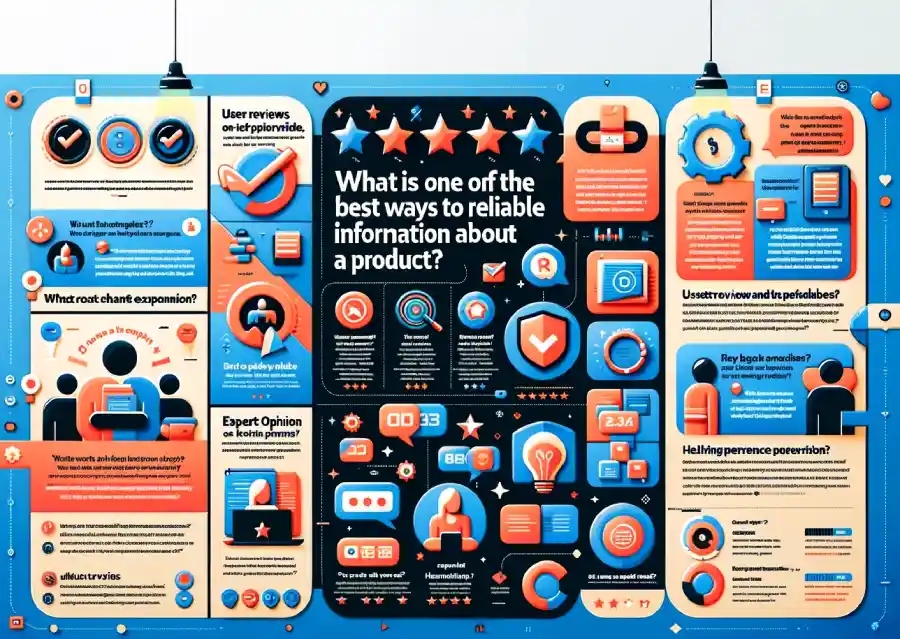
Did you know that companies with a marketing plan are 313% more likely to report success in their marketing efforts? This statistic underscores the transformative power of a structured marketing approach.
In this blog post, we will explore the marketing plan—a strategic roadmap businesses use to organize, execute, and track their marketing efforts effectively.
Whether you’re a startup entrepreneur or a seasoned marketer, understanding how to craft a detailed marketing plan is crucial for aligning your marketing efforts with your business goals and maximizing ROI.
What Is a Marketing Plan?
At its core, a marketing plan is developed to guide an organization through the stages of reaching out to potential customers. It aligns with the company’s overall marketing strategy and spells out specific activities aimed at promoting products or services.
Key Components of a Marketing Plan:
- Market Research: This supports critical decisions regarding pricing and new market entries, providing a foundation upon which realistic strategies are built.
- Targeted Messaging: Effective marketing speaks directly to specific demographics and geographic areas, ensuring that the message resonates with the intended audience.
- Platform Selection: Choosing the right platforms—be it digital, radio, internet, or trade magazines—is crucial for the efficient delivery of marketing content.
- Metrics and Reporting: A robust marketing plan details the metrics that will measure the effectiveness of marketing efforts and outlines the reporting schedule.
Types of Marketing Plans
By Purpose
New Product Launch Plans: Tailored to position a new product in the market effectively.
Social Media Marketing Plans: Designed to leverage various social platforms for brand promotion and customer engagement.
By Timing
Time-Based Plans: These include annual or quarterly plans that adjust marketing strategies based on seasonal market changes or company milestones.
How to Write a Marketing Plan
Writing an effective marketing plan is a critical step that helps a business to articulate its objectives and map out strategies to achieve them. Below, I’ll guide you through the major components involved in crafting a practical and actionable marketing plan.
Mission and Value Proposition
Begin by stating your company’s mission. This should clearly reflect the overarching purpose of your organization and how it intends to serve its customers.
Your value proposition is the unique value your product or service provides to the customer. It should differentiate your brand from competitors and address the specific benefits that meet the needs of your target market.
Set KPIs
Identify key performance indicators (KPIs) that will help you measure the effectiveness of your marketing activities. These could include metrics such as lead generation numbers, website traffic, conversion rates, and customer engagement levels.
Ensure that your KPIs align with broader business objectives. This alignment ensures that your marketing efforts contribute directly to your company’s strategic goals.
Identify Your Target Market
Conduct thorough market research to gather insights about your potential customers. This research should include demographic, psychographic, and behavioral data to help you understand who your customers are and what they need.
Divide your market into manageable segments based on common characteristics. This allows for more targeted and effective marketing strategies.
Choose the segment(s) that best align with your business’s strengths and the unique value you provide. This focus increases the likelihood of success for your marketing efforts.
Strategy and Execution
Outline the strategies you will use to reach your target audience and convey your value proposition. These might include content marketing, social media marketing, email campaigns, SEO, and more.
Develop specific marketing campaigns that support your strategies. Plan the timing, channels, and content for each campaign.
Determine what resources (time, personnel, and money) are needed for each strategy and campaign.
Budgeting
Create a detailed budget that outlines expected costs for all marketing activities. Be realistic and factor in all potential expenses to avoid future oversights.
Allocate your budget across different channels and campaigns based on their expected return on investment (ROI). Prioritize spending on high-impact activities that align closely with your business goals.
Adjustments and Optimization
Regularly track the performance of your marketing activities against the KPIs you’ve set. Use tools like Google Analytics, CRM software, and social media analytics to gather data.
Use the insights gained from data to make informed decisions about what’s working and what isn’t. Be prepared to pivot strategies and reallocate resources to optimize your marketing efforts.
Marketing is an ongoing process. Continuously seek ways to improve your strategies based on market trends, customer feedback, and competitive analysis.
Final Tips
- Stay Flexible: Market conditions change rapidly. A flexible marketing plan can adapt to changes in consumer behavior or competitive actions.
- Document Your Strategy: Keep detailed documentation of your marketing plan and activities. This documentation is vital for consistency and will be useful for onboarding new team members and informing stakeholders.
- Review Regularly: Schedule regular reviews of your marketing plan to ensure it remains aligned with your business goals and continues to be effective in a changing market environment.
By following these detailed steps, you can craft a marketing plan that not only reaches but resonates with your target audience, driving growth and building a sustainable competitive advantage.
Marketing Plan vs. Business Plan: Differences and Integration
A marketing plan and a business plan serve distinct functions within an organization. A business plan outlines the entire operational and strategic framework of a business, including financial forecasts, product development, and market analysis. It is typically used to secure investment and guide the company’s strategic direction. In contrast, a marketing plan focuses specifically on strategies for attracting and retaining customers by detailing target markets, marketing objectives, promotional strategies, budgets, and metrics for effectiveness.
These plans are interconnected; the marketing plan supports the broader goals of the business plan by detailing how the business will attract and retain customers, directly impacting revenue. Furthermore, implementing the marketing plan provides valuable data that can refine overall business strategies, establishing a productive feedback loop across the organization.
Practical Example: Case Study of John’s Marketing Plan
John identified a niche for gardening tools designed for seniors and created a marketing plan aimed at this demographic. His research indicated a preference among seniors for lightweight, easy-to-use tools and shopping in physical stores. John’s marketing strategy included advertising through traditional media channels like radio and local newspapers, favored by the senior demographic. He also engaged directly with the community through workshops and demonstrations at community centers and gardening clubs, which allowed direct interaction with potential customers.
John monitored the effectiveness of these strategies through sales data and customer feedback. Initial results showed that community workshops were particularly successful, leading to higher engagement and conversion rates. Based on this feedback, John reallocated more resources to these events. By continuously monitoring and adjusting his marketing efforts, John’s strategies remained aligned with customer preferences, enhancing the success of his marketing plan and supporting the overall business objectives. This approach demonstrates how a focused and responsive marketing plan can effectively target and engage a specific market segment, driving growth and supporting broader business goals.
Supporting Tools and Frameworks
Marketing Plan Template
A marketing plan template provides a predefined structure that helps streamline the creation of a marketing plan. It typically includes sections for market analysis, target audience, objectives, strategies, budget, and metrics, allowing marketers to systematically approach their planning. Using a template can save time and ensure all critical components are covered.
Executive Summary in a Marketing Plan
The executive summary is a crucial component of a marketing plan. It offers a concise overview of the entire plan, summarizing key points such as market research findings, marketing goals, the main strategies to be employed, and expected outcomes. The purpose of the executive summary is to give stakeholders a quick preview of the plan’s contents, enabling a clear understanding of the company’s marketing direction without needing to read the entire document.
Marketing Strategies
Top-Down vs. Bottom-Up Marketing Strategy
In a top-down marketing strategy, the marketing efforts are driven by management decisions without much input from lower levels of the organization or direct feedback from customers. This approach often focuses on broad market trends and corporate objectives, pushing a unified message through traditional mass advertising channels.
Conversely, a bottom-up marketing strategy involves planning and decision-making that originate from customer feedback or frontline observations. This approach is more responsive and adaptable, focusing on creating value for customers by addressing their specific needs and preferences. It is particularly effective in rapidly changing markets or where customer engagement plays a significant role in shaping the product or service.
Cost Considerations
Budgeting is a pivotal activity in the planning of marketing strategies. The cost of a marketing plan can vary greatly depending on the scope, scale, and channels selected. Digital marketing might require less financial outlay compared to traditional media like television or print, which generally have higher entry costs. Efficient budget management ensures that resources are allocated effectively, maximizing return on investment and maintaining financial health.
Conclusion
Marketing plans are essential for clearly defining marketing efforts and aligning them with strategic business objectives. They help ensure that resources are efficiently used and that marketing activities are directed effectively towards identified target markets.
The importance of a well-structured marketing plan cannot be overstated. It not only guides a company in engaging effectively with its customers but also provides a framework for evaluating the success of marketing strategies and making necessary adjustments.
Whether you are just starting out or looking to improve existing marketing efforts, take the time to develop or refine your marketing plan. This strategic tool is invaluable for navigating the complexities of the market and ensuring sustained business growth. Engage with this process to better understand your market, refine your marketing strategies, and achieve your business objectives.




Pingback: What is "site: webfx.com ""what is content marketing"""? - Vlineperol